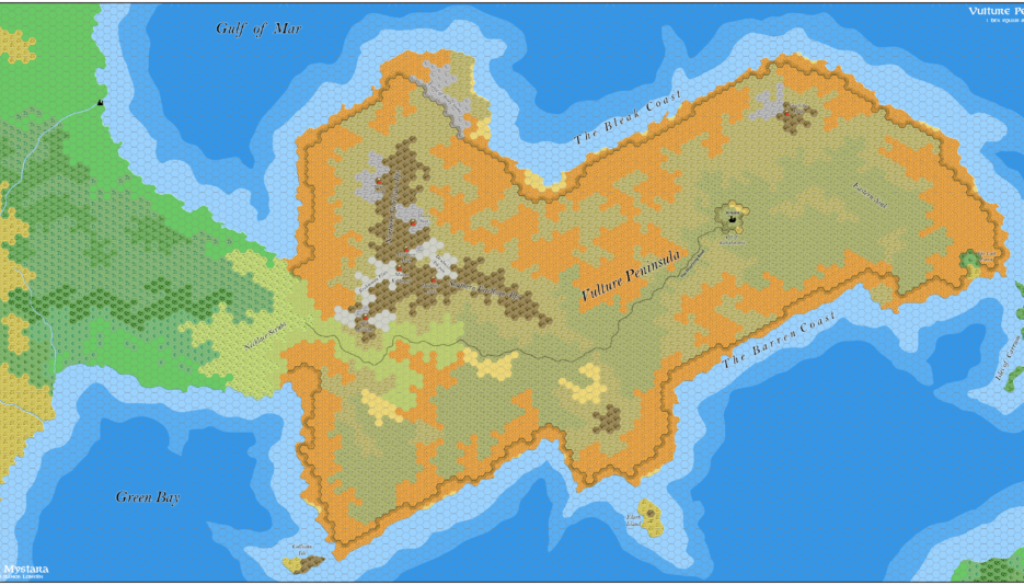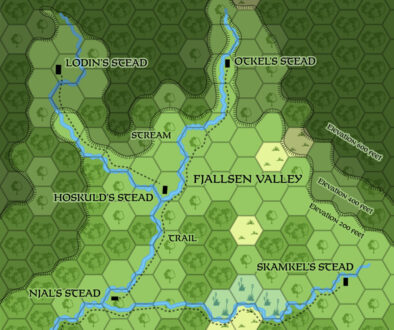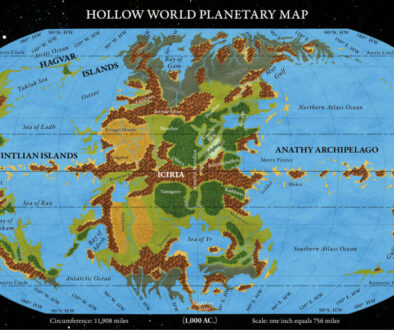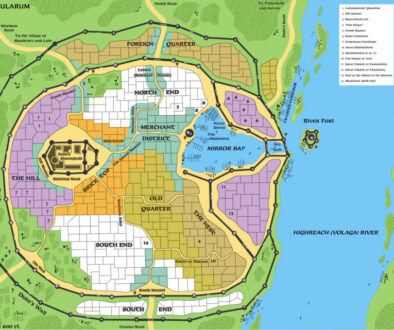Ramelin’s Vulture Peninsula, 8 miles per hex v1
November 2015 was a momentous month for Jose’s project, as he finalised more than thirty individual maps over a couple of days. The first set covered most of the Known World, while the second finished that off and then moved west to cover the Serpent Peninsula and the Savage Coast.
In the last map of these sets, Jose took his first trip to the southern continent of Davania, tackling the Vulture Peninsula. Thibault had previously done a rough draft of the area at this scale in his Eastern Davania, 8 miles per hex (2003-2004), and Jose built on that design, completing what Thibault started by adding a lot of fine detail.
Although he would revisit the area in subsequent years, this first version was already pretty complete. In future versions, Jose mostly added detail to the surrounding regions rather than the peninsula itself.
Fan-made Map by Jose Ignacio Ramos Lomelin (November 2015)
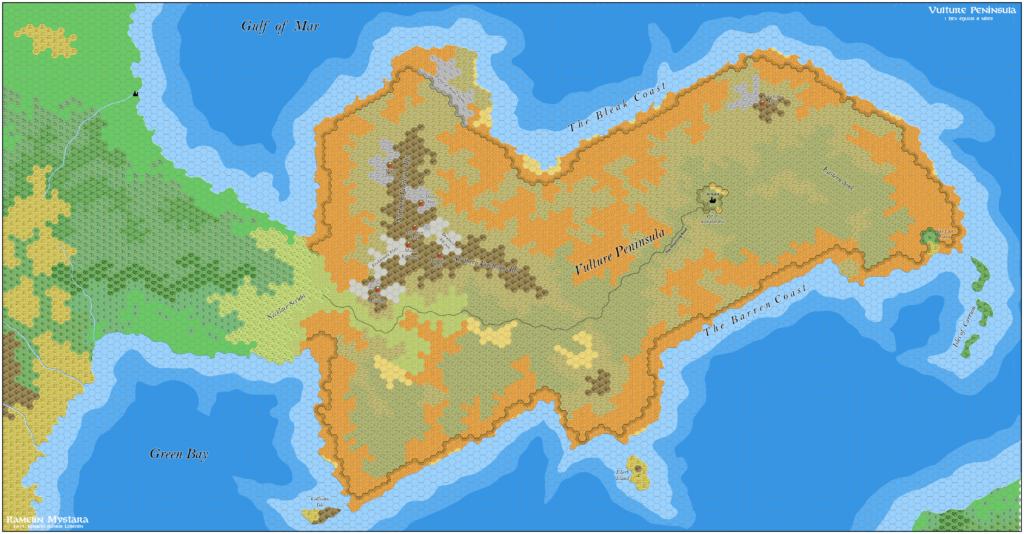
This is an original map created by one of Mystara’s excellent fan cartographers. For more information on the cartographer, including a gallery of all their maps, see also Appendix M: Mappers of Mystara.
Sources
- Thibault’s Eastern Davania, 8 miles per hex (2003-2004)
References
- All of Jose’s maps at the Atlas of Mystara
- Jose’s entry in Appendix M: Mappers of Mystara (upcoming)
- Jose’s author page at the Vaults of Pandius
Chronological Analysis
This is a fan-made map. It was published in November 2015. The updated Atlas version of this map is not yet available. See also Appendix C for annual chronological snapshots of the area. For the full context of this map in Mystara’s publication history, see the upcoming Let’s Map Mystara 2015. (Please note that it may be some time before the project reaches this point.)
The following lists are from the Let’s Map Mystara project. Additions are new features, introduced in this map. Revisions are changes to previously-introduced features. Hex Art & Fonts track design elements. Finally, Textual Additions are potential features found in the related text. In most cases, the Atlas adopts these textual additions into updated and chronological maps.
Coming Soon

